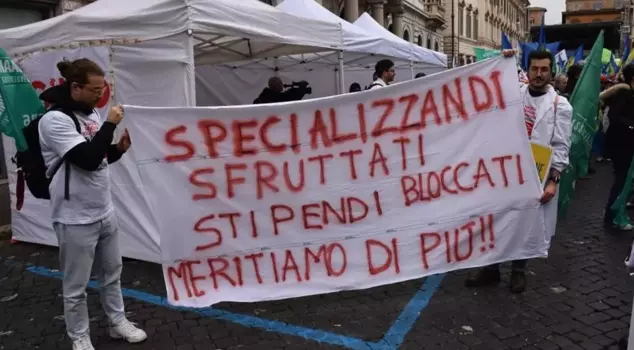
21.11.2024 10:31
Thousands of doctors and nurses in Italy went on strike to protest inadequate salaries and poor working conditions. The country's health spending, at 6.2% of GDP, is below the EU average, and it ranks as the country with the lowest per capita health expenditure among G7 nations. Unions reported that 85% of workers participated in the strike. The Health Minister stated that they are ready to meet with the unions to address the issues.
Thousands of doctors and nurses in Italy did not go to work today to protest their working conditions and salaries. This action has become the latest indication that the problems in the country's healthcare sector are growing increasingly severe.
Unions representing healthcare workers state that the resources allocated in the government's 2025 budget are insufficient. Despite the increasing need for healthcare services due to an aging population, the budget allocated to Italy's national health system is only 6.2% of GDP. This rate is significantly below the European Union average of 6.8%. Additionally, Italy has the lowest per capita healthcare spending among G7 countries.
The three unions organizing the strike (Anaao Assomed, Cimo-Fesmed, and Nursing Up) announced that 85% of workers participated in the action. The unions stated, "This situation should remind us of the unacceptable conditions in our hospitals and the reasons for our protest." Emergency healthcare services continue during the strike.
Health Minister Orazio Schillaci said, "As always, we are ready to meet with the unions and resolve the issues on the table."
Promises to strengthen public health services after the COVID-19 pandemic have not been fulfilled. Due to long waiting times in hospitals, Italians are increasingly forced to turn to private clinics. The economic plan announced by the government in October predicts that healthcare spending will remain at 6.2% of GDP until 2027.
As an indication of the challenges faced by Italian hospitals, the southern region of Calabria has signed an agreement to bring 500 doctors from Cuba for three years to address staff shortages.
Giorgia Meloni's right-wing government is facing increasing backlash from the labor sector as it tries to align post-pandemic spending with EU rules.